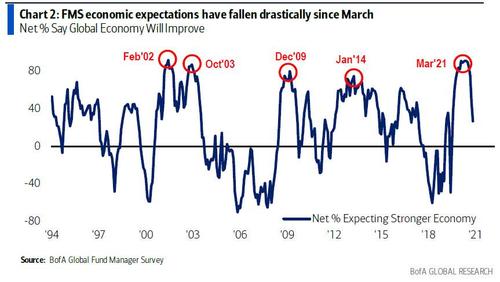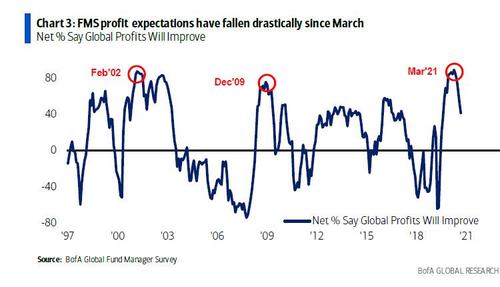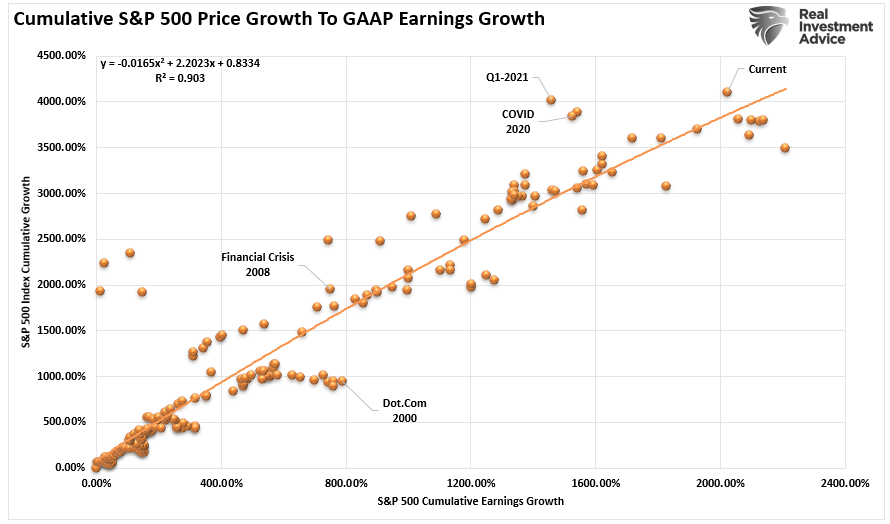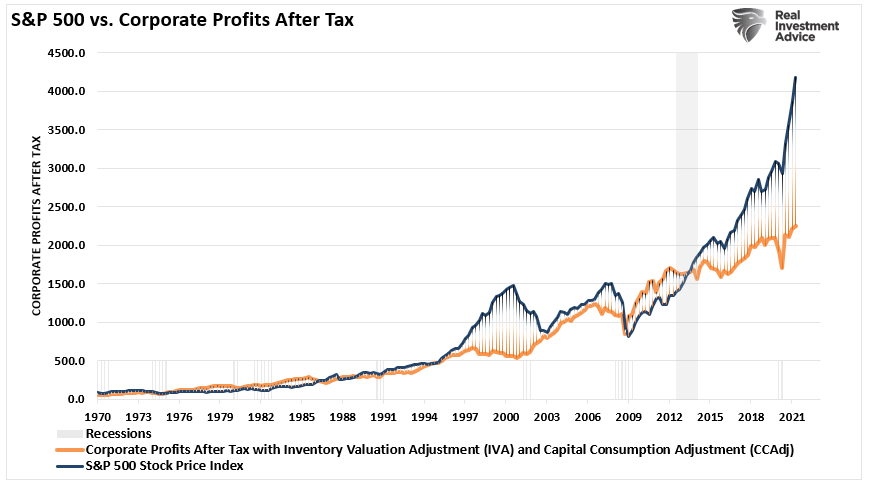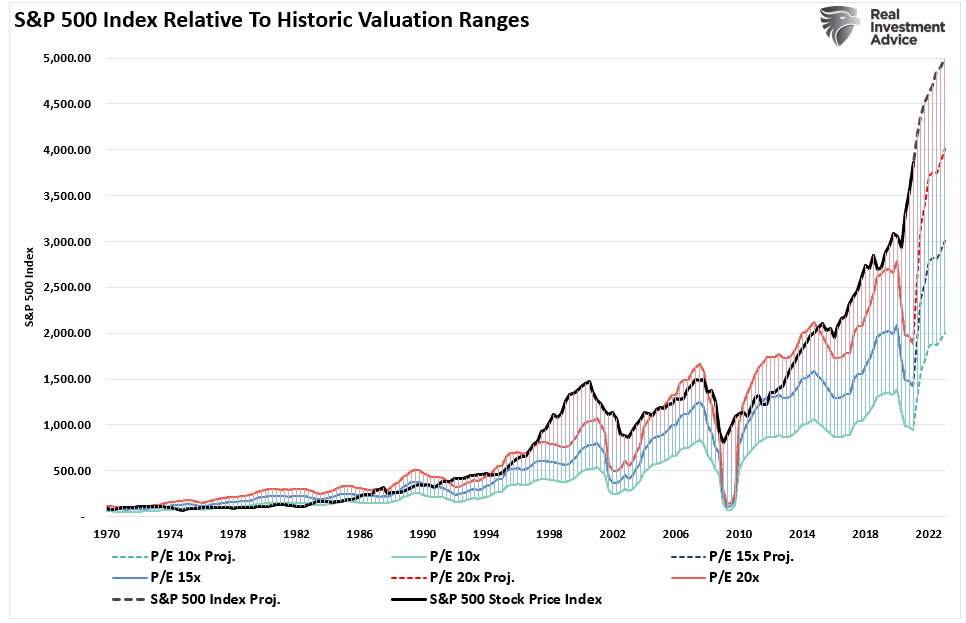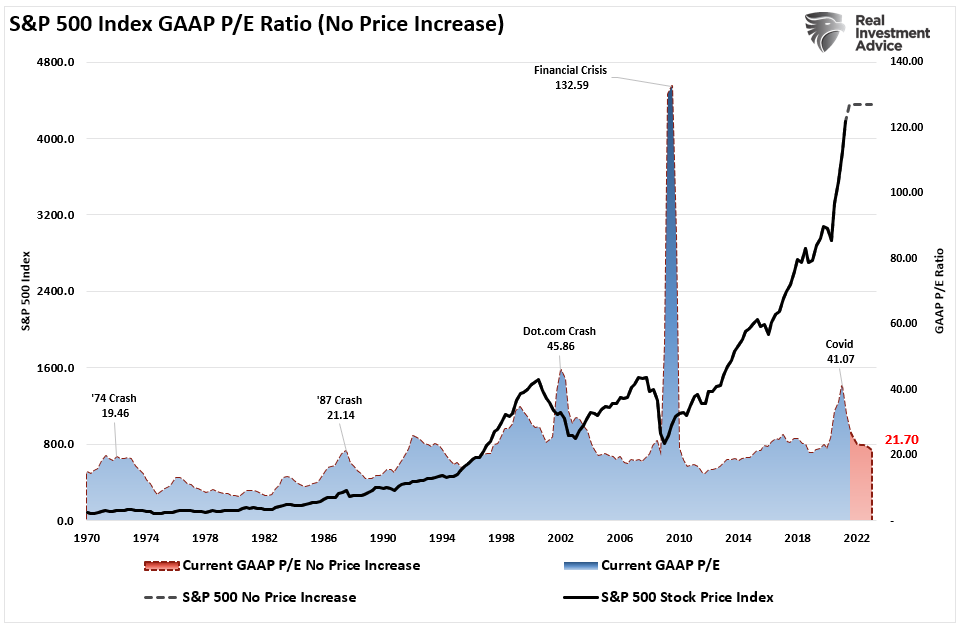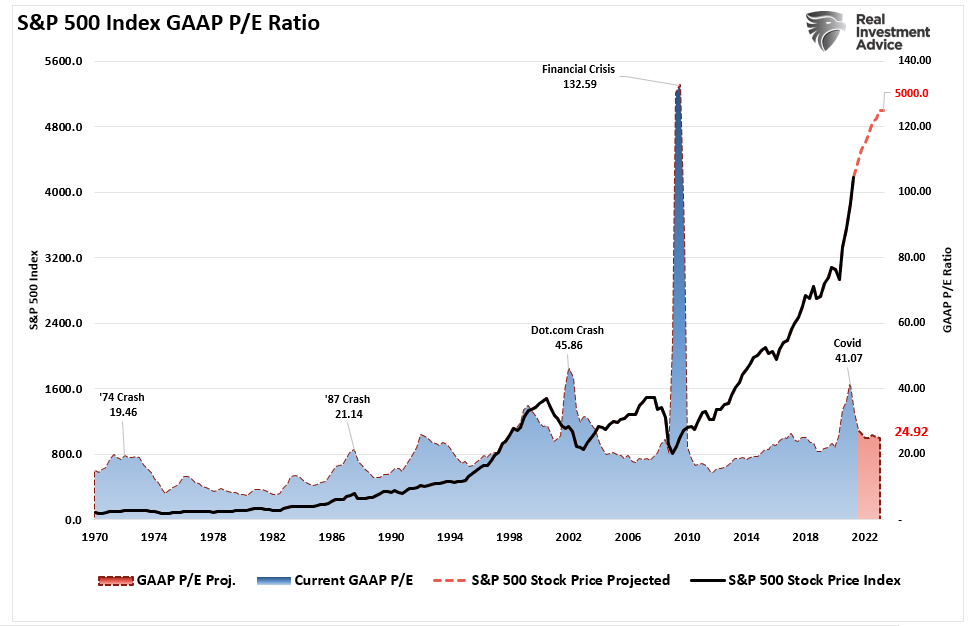Just recently in our “Daily Market Commentary” (subscribe for free), we discussed Wall Street setting its sights on S&P 5000.
“Wells Fargo’s Chris Harvey raised his year-end S&P 500 price target to 4,825 from 3,850, as reported by Bloomberg’s Lu Wang. This move follows a weekend note by David Lefkowitz, head of equities for the Americas at UBS Wealth Management, who raised his year-end price target for the S&P 500 to 4,600 from 4,500.
Lefkowitz also raised his June 2022 price target to 4,800 from 4,650, with the real headline coming from his year-end 2022 S&P 500 price target — 5,000.
‘Yes, the rally off the COVID-19 bottom in March 2020 has been extraordinary, but we think there are further gains ahead,’ Lefkowitz writes. ‘Solid economic and corporate profit growth, in conjunction with a still-accommodative Fed, means that the environment for stocks remains favorable. As a result of our higher EPS estimates, we raise our targets for the S&P 500 for December 2021 by 100 points to 4,600 and June 2022 by 150 points to 4,800. We initiate our December 2022 target of 5,000, representing about 13% price appreciation from current levels.’” – Yahoo
The Race To 5000
Considering the marketalready doubled from the pandemic lows, the escalation of price targets is not surprising. Such is particularly the case when Wall Street needs to sell products to retail investors.
“The following graph and commentary from GMO, show that over the last year corporations took advantage of higher share prices. Interestingly, IPO issuance is currently running at the same pace as the market peak in 2000. Massive issuance from existing stocks is largely responsible for the big difference between total issuance today versus 2000.” – Michael Lebowitz
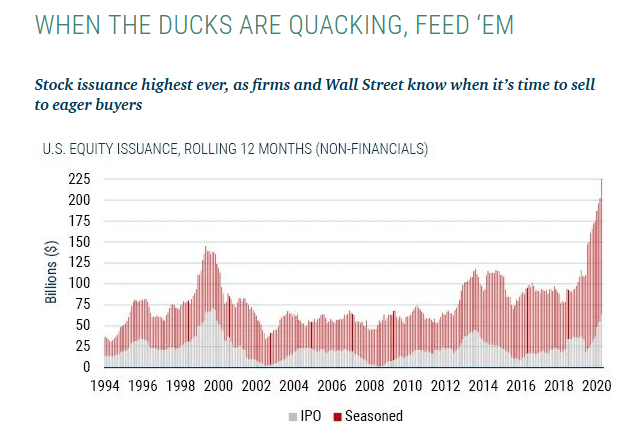
Like roaches in the kitchen, when there is one, there are always others. Credit Suisse also hiked price targets suggesting that earnings growth is the driving factor. To wit:
With this 2022 outlook, Lefkowitz joins Credit Suisse’s Jonathan Golub who earlier this month put a price target of 5,000 on the S&P 500 for the end of 2022. The equity strategy team at Goldman Sachs also garnered headlines earlier this month in raising their year-end price target to 4,700 from 4,300 while putting a year-end 2022 price target on the benchmark index of 4,900.
Lefkowitz sees earnings growth, not multiple expansion, as the driving force behind the market’s rally in the year ahead.
‘Our price targets assume a forward P/E multiple of about 20x, slightly below current levels of 21x. We expect valuations to remain above historical averages mostly due to the very low interest rate environment. Said another way, stocks continue to look appealing relative to bonds.’” – Yahoo
Rationalizing The Increase
The problem with the analysis is that it is based on rationalizations rather than reality. We discussed previously there is no precedent supporting the view thatlow rates justify high valuations.
“The primary argument is that when inflation or interest rates fall, the present value of future cash flows from equities rises, and subsequently, so should their valuation. While true, assuming all else is equal, a falling discount rate does suggest a higher valuation. However, when inflation declines, future nominal cash flow from equities also falls, this can offset the effect of lower discount rates. Lower discount rates are applied to lower expected cash flows.
In other words, without adjusting for inflation and, in no small degree, economic growth, suggesting low rates justify overpaying for cash flows is a very flawed premise.
‘Instead of regarding stocks as a fixed-rate bond with known nominal coupons, one must think of stocks as a floating-rate bond whose coupons will float with nominal earnings growth. In this analogy, the stock market’s P/E is like the price of a floating-rate bond. In most cases, despite moves in interest rates, the price of a floating-rate bond changes little, and likewise the rational P/E for the stock market moves little.’ – Cliff Asness“
Let’s set aside the “low rate rationalization” and focus on the “earnings growth” side of the valuation argument.
Earnings Growth A Reflection Of Economic Growth
The biggest problem for the S&P 5000 target is underlying earnings. There is an obvious correlation between economic growth and corporate earnings. Such is because over the long term the economy is what generates corporate revenues. While analysts ramped up earnings expectations following the massive liquidity injections from the Government, the payback is coming.
“As BofA recently noted, global expectations are beginning to roll over from very high levels.“
The first problem with Wall Street analysis is several:
- Historically, earnings estimates are roughly 30% higher than what turns out to be reality.
- As reporting dates approach, analysts revise down estimates below reported levels (assuring a high beat rate), and
- Analysts are never held accountable to their orginal estimates.
Given the lack of accountability, it is not surprising analysts are always overly optimistic in their initial estimates which gives them plenty of room to downgrade in the future.
However, there is roughly a 90% correlation between the stock market and GAAP earnings growth. Therefore, if earnings do decline, as profit expectations fall, then the S&P will have a more difficult time hitting a high target.
Furthermore, the current gap between corporate profits and the market has historically not ended well for investors.
Valuations Will Remain Elevated
The problem currently is even with the estimated increase in earnings, the QE-driven price increase keeps valuations extended well above historical ranges.
While that statement comes with the caveat that “valuations are terrible market timing metrics,” they do imply lofty expectations are likely to be disappointed.
I previously quoted Carl Swenlin on earnings. As Carl noted, there is nothing normal with GAAP earnings. But, of course, today, most companies report “operating” earnings which obfuscate profitability by excluding all the “bad stuff.”
The following table shows the expectations for reported earnings growth:
- 2020 (actual) = $94.13 / share
- 2021 (estimate) = $185.49 (Increase of 97% over 2020)
- 2022 (estimate) = $200.62 (Increase of 113% over 2020)
The chart below uses these earnings estimates and assumes NO price increase for the S&P 500 through 2022. Such would reduce valuations from 41x earnings in 2020 to roughly 22x earnings in 2022. (That valuation level remains near previous bull market peak valuations.)
However, if analysts are correct and the market hits 5000, valuations remain elevated. Instead of valuations declining, the increase in price keeps valuations hovering near 25x earnings.
Given that markets are already trading well above historical valuation ranges, such suggests that outcomes will likely not be as “bullish” as many currently expect.
“Historically, price has usually remained below the top of the normal value range (red line); however, since about 1998, it has not been uncommon for price to exceed normal overvalue levels, sometimes by a lot. The market has been mostly overvalued since 1992, and it has not been undervalued since 1984. We could say that this is the ‘new normal,’ except that it isn’t normal by GAAP (Generally Accepted Accounting Principles) standards.” – Carl Swenlin
S&P 5000 Is Likely
We don’t disagree the S&P 500 could well hit a target of 5000. But, let us be honest about the reasons why:
- $120 billion a month in liquidity,
- Zero interest rates, and
- A substantial amount of speculative market fervor.
Like a snowball, the current market momentum could very well carry the S&P higher over the next year.
Such does not preclude a “round-trip” ticket in the future.
Throughout history, overvaluations of markets have never been resolved by earnings catching up with the price. Secondly, the two-fold problem of the temporary nature of the stimulus and inflation leaves the market vulnerable to a downward shift in earnings expectations over the next few quarters. As noted, Wall Street has ratcheted up expectations to try and justify current prices.
While monetary interventions allow market participants to ignore the reality of the economic ties to the market, such does not preclude hair-raising volatility and significant declines, as we saw in March 2020.
More importantly, if the Fed backs off, whether by its design or due to inflation, slower economic growth, or massive debt overhead, rich valuations will matter.
The risk of disappointment is high. And so are the costs of investing based on analysis without all of the facts.
Related: Stock Market Addiction: Warning Signs & How To Fix The Problem



